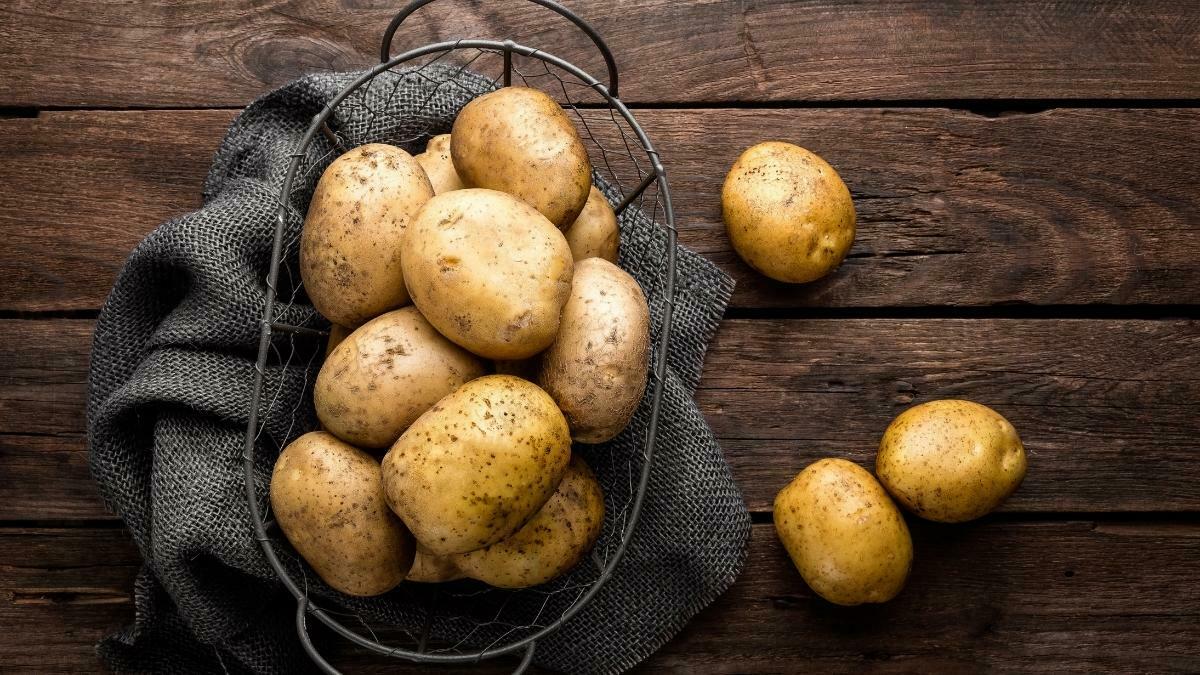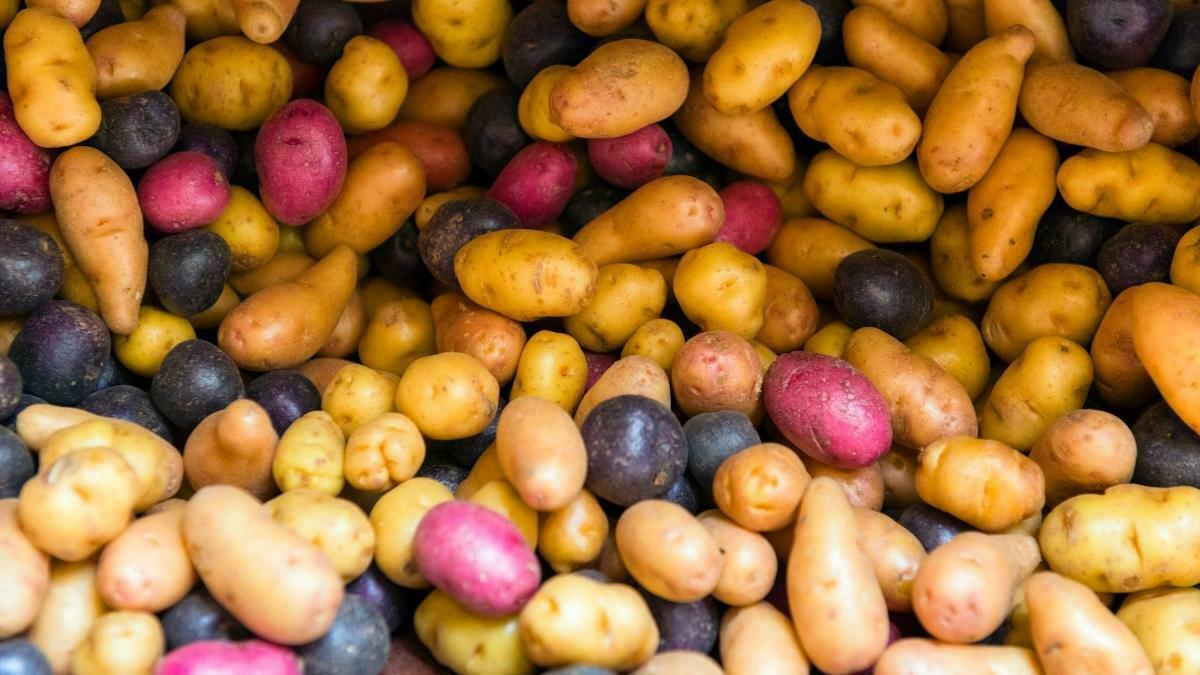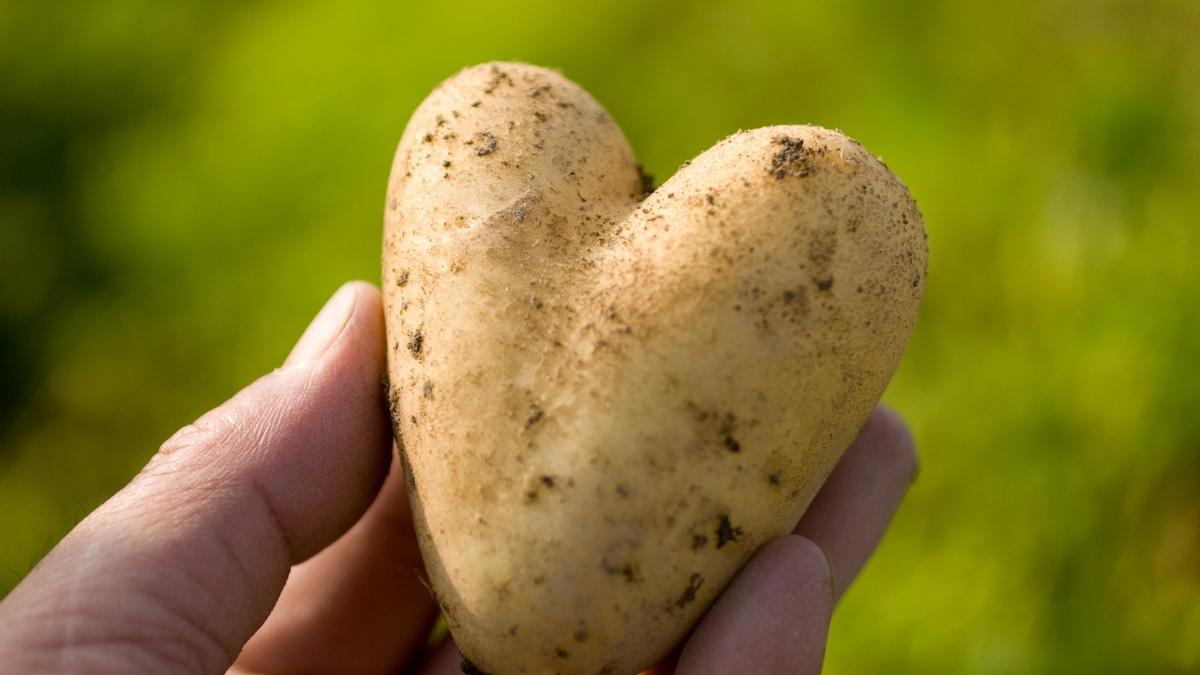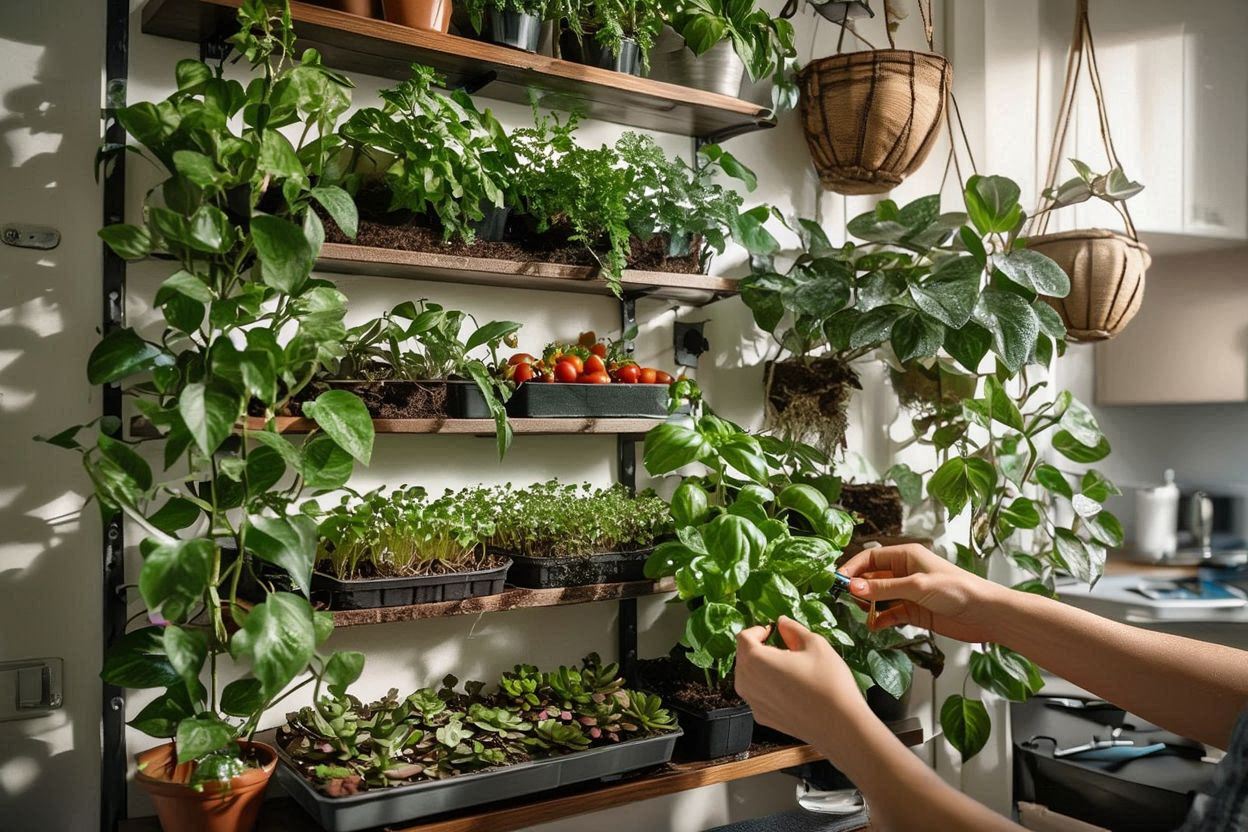Knowing how to grow potatoes indoors is an excellent idea for many reasons. The first is that the indoor gardener chooses the soil to grow these vegetables. This results in higher-quality potatoes.
Potatoes grow best in sandy soil that is minimally rich in nutrients. Potatoes are one of the easiest vegetables to grow outdoors. Growing them indoors is an ideal opportunity for creating “designer” potatoes that are quite popular these days. Potatoes grown indoors need an extra careful balance of soil and irrigation.
Potatoes can be grown from the eyes of ripened potatoes. These eyes look like little white spots on the exterior skin of the potato.
Potatoes usually sprout naturally from the eyes on their surface if stored in a warm place. This presents a great opportunity to use these sprouts to plant and grow potatoes indoors.
It’s important to know that you can harvest five to ten pounds of potatoes from a handful of potato eyes. Potatoes need lots of bright sunlight to flourish.
A Comprehensive Guide to Growing Potatoes in a Container Indoors
The prospect of understanding how to grow potatoes in a container indoors requires comprehensive knowledge of the process and understanding the specific signs associated with the growth stages of the potato plant. One such intriguing sign manifests when the potato plants unveil light orchid-colored tubers. When you spot these, it signifies that your plant has been industrious underground, successfully producing potatoes beneath the soil that is now ripe for harvesting.
Harvesting potatoes can be approached in two distinct ways, each carrying its own benefits. The first technique calls for delicate hands and a discerning eye. This involves carefully digging around the tubers, exercising caution so as not to wound the potatoes during the excavation process accidentally. This procedure should ideally be carried out gently to ensure the potatoes are retrieved in their prime state, free from any undesirable punctures or gashes.
Alternatively, the second method is slightly less hands-on. It involves grasping the vibrant green foliage sprouting at the top of the plant and slowly lifting it away from the container. This action allows you to gently remove the potatoes from their deeply embedded roots in the soil.
Despite these two methods offering a safe means to extract your potatoes, it is important to acknowledge that neither method necessarily promotes the production of bumper crops. The extraction of potatoes by itself doesn’t stimulate a boost in crop yield. However, the plant possesses a hidden capability. As long as there is green foliage remaining in the planter pot, the potato plant harbors the potential to reproduce from the vines still residing within the pot, given the right conditions.
Therefore, if your intention aligns with procuring a bumper crop, the recommended course of action is to let the green foliage be and continue with your regular watering schedule. By fostering an environment for the plant to thrive in, you essentially enable the potato plant to enter into a cycle of self-reproduction, thereby increasing the possibility of a more bountiful harvest over time. This ability to regenerate is a fascinating characteristic of the potato plant, rendering the process of learning how to grow potatoes in a container indoors not only productive but truly rewarding.
You might want to see: How to Grow Potatoes in Florida 101: A Complete Guide (And An Awesome Recipe!)
Growing Potatoes Indoors from Sprouts
When no potato eyes are available, another way to get potato sprouts started is to slice a potato in half. Pierce the potato halves with four toothpicks about one-quarter inch into the skin around the middle.
The toothpicks will provide proximity to water. Place the potato half over a four-ounce glass filled with water. Set the glass on a sunny windowsill.
You shouldn’t ignore changing the water if it begins to cloud over. It takes about one week before potato halves begin sprouting.

The best way to plant potatoes indoors
To plant potato sprouts directly into the soil, choose a wide container about six inches deep. Fill the bottom of the pot with small pebbles and potting soil blended with light sand. The ratio of potting soil to and should be ten parts potting soil to one part sand.
Plant the sprouts with roots facing downward into the soil about six inches. Make sure to plant the sprouts away from the edges of the planter pot to give them enough room to grow. Water frequently.
Potato Growth
In a few weeks, the potato plant will have a full head of deep green foliage. Take note that the vines may begin to appear at the exposed underside of the plant. Add more soil to cover the vines.
Tips on Growing Potatoes in a Container
When the potato plants sprout light orchid-colored tubers, this is a sign your plant has produced potatoes beneath the soil, and they can be dug up.
There are two ways to remove them: the first method is to dig them up carefully. The second is to lift the green foliage at the top away from the container and remove the potatoes from their roots.
However, removing potatoes this way won’t encourage bumper crops. So long as green foliage remains in the planter pot, the potato plant will eventually reproduce from the vines remaining in the pot. Continue to water if a bumper crop is desired.
Experiment to Create Designer Potatoes
There are various types of potatoes available in markets today. Although there are over 4,000 species of potatoes, the most commonly grown are red, russet, white, Yukon Gold, blue, and the typical yellow potato.
Each of these has individual properties like the russet potato for baking, red potato for boiling, Yukon Gold for salads and fried potatoes, blue for boiling and baking, and white and yellow for mashed potatoes.
Grow “New” Potatoes Indoors
The term “new” potatoes refer to small, less mature potatoes. These are identifiable by the thinner outer, somewhat waxy skin and contain a slightly higher amount of moisture than mature potatoes.
Some say new potatoes are also sweeter. This is a result of these young potatoes not turning the sugar content into starch. The other distinction of fresh potatoes is their shape.
Most are perfectly round and hold their shape when boiled or baked. New potatoes can be grown indoors. It’s a matter of the indoor gardener watching for the first signs of tubers and removing the smaller potatoes from the planting pot.

What Do You Need to Grow Potatoes Indoors?
It’s possible to grow potatoes in several containers indoors. Look for wide, round, or square containers with deep bottoms and a depth of at least 12 inches. The more room potato roots have to spread in the pots, the larger the potato crop will be.
If you want your potato garden to look similar to an outdoor potato patch, place several containers together in a sunny spot. It may be a good idea to purchase a garden trowel to dig up potatoes ready for harvesting.
In addition, the soil will need to be added once roots beneath the foliage become visible. Some local garden centers sell soil pre-packaged specifically for indoor potato gardens.
Ideally, two or three decorative garden boxes with a depth of at last 12″ are sufficient for a whole crop of potatoes. Garden boxes are sold where ever decorative lawn items are sold. The materials from which containers and garden boxes are made are also necessary.
Since potatoes tend to drink in moisture, choose containers made from clay or plastic. If you plan to grow several types of potatoes, it’s a good idea to purchase garden tags and write the name of the potato on each label and attach it to the container.
There are fun ways to experiment with growing potatoes. One very successful in getting potatoes to germinate is to place white sprouts from mature potatoes in a large sealable plastic bag. Cover with potting soil to about 1″ over the sprouts.
Seal the bag for about one day or until the first signs of sprouting begin. Set the bag on a windowsill in a sunny spot. Then, unseal the bag and gradually add more soil as sprouts become more prominent until the plastic bag has been filled.
This is a fun way to watch potatoes grow indoors. The first crop of these potatoes can be harvested as “new” potatoes, or they can be allowed to mature to larger sizes. These potatoes will be as sweet as freshly picked young corn.
Using the bag method is also an opportunity to cross-breed potatoes. To do this, select white sprouts from two or more types of potatoes. Place them side by side inside the plastic bag.
Eventually, the heat of the sun and moisture retention of the bag will meld two types of potato sprouts together. This may produce potatoes with uniquely colored flesh, depending on the choice of nodes.
The result will be your own signature hybrid potato. It may be worthwhile to keep notes on cross-breeding potatoes for future reference.
Potatoes are Everyone’s Favorite
Freshness and quality are significant reasons for an indoor potato garden. Convenience is another reason. The prodigious indoor crops potatoes produce to provide a ready supply of this vegetable year-round.
To store ample crops, place harvested potatoes in a plastic or brown bag in a cool, dry place. Potatoes remain fresh for up to two months when properly stored.
Things to Remember about Growing Potatoes
. Potatoes can be planted any season of the year indoors
. Use wide, round containers or garden boxes with at least 12″ in depth
. Start potatoes from sprouts in water or soil
. Water frequently
. Grow potatoes in full sun
. No fertilizer is required
. Keep exposed roots covered with soil
. Plant several types of potatoes
. A half dozen sprouts can produce ten pounds of potatoes
. Experiment with cross-breeding different potato species
By following the basics of growing potatoes, the indoor gardener discovers the simplicity and ease of providing a high quantity of this vegetable. To create designer potatoes for sale to markets, develop several types of hybrid potatoes and harvest them when they are young.
A hybrid potato is a species that grows from several generations of the same sprout or eye. Cross-bred designer potatoes are those that have a different color flesh than white, gold, blue, or red potatoes.
Also, when cross-breeding potatoes, study the skin of each generation of potatoes. For example, crossbreeding a russet potato with thicker skin with Yukon Gold’s thinner skin can produce a species with dark brown delicate skin.
The Indoor Potato Garden Goes to Market
Today, markets and restaurants pay higher prices for designer and hybrid potatoes. These look great on haute cuisine dinner plates and are highly prized for their sweeter flavor, attractive flesh, and appealing shape.
These potatoes also marry well with various spices in many restaurant dishes. For example, slice potatoes into half-dollar sizes and sprinkle with rosemary before baking.
Fried potatoes are delicious when first soaked in vinegar, drained, and then salted before frying—stuff pre-baked potatoes with broccoli or spinach. Garnish with shredded Jack or Cheddar cheese and bacon bits and re-baked. Boiled potatoes are great in salads, casseroles, and as side dishes. There are many recipes that make great use of an abundant crop of the highest quality potatoes grown in an indoor garden.
That was our guide on why and how to grow potatoes indoors. If you enjoyed the info you read, you can help us by sharing the article with your friends!


